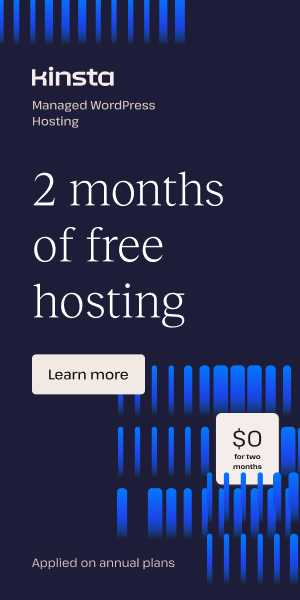Landing Page Optimization: Figma to WP
Enhancing User Engagement with Design Precision
In today’s digital marketplace, landing pages play a pivotal role in converting visitors into customers. Leveraging Figma’s versatile design capabilities combined with the power of WordPress enables businesses to create highly optimized landing pages that attract and retain users effectively. This synergy not only ensures pixel-perfect designs that accurately represent brand identity but also guarantees a seamless user experience that drives conversions.
Figma allows teams to craft engaging user interfaces with focus on compelling headlines, strategic call-to-actions (CTAs), and microcopy that resonates with specific audience segments. By prototyping directly in Figma, designers can rapidly iterate layouts and visual hierarchies, ensuring that elements like CTAs grab user attention exactly where intended. The direct conversion from landing pages Figma designs to WordPress themes also preserves this fidelity.
This precision in design is crucial because it cultivates trust and brand consistency across devices, notably improving engagement metrics and conversion rates. The ability to design with cross-device compatibility in mind means landing pages will perform smoothly whether viewed on desktop, tablet, or smartphones—a key factor as research shows mobile-optimized landing pages can boost conversions by up to 27%.
Strategic Workflows to Maximize WordPress Landing Optimization
Collaborative Design and Development
Effective WordPress landing optimization starts with integrating design and development workflows early. Figma’s collaborative features facilitate close interaction between designers and WordPress developers, ensuring technical feasibility is considered throughout the design process. Sharing interactive Figma prototypes before coding allows developers to plan resource management, responsiveness, and accessibility requirements precisely.
Employing tools such as Figma’s Design System Analytics plugin supports maintaining consistent UI components, streamlining updates, and avoiding design redundancy. Moreover, incorporating accessibility standards like color contrast and keyboard navigation in the design phase amplifies usability and conversion potential, broadening the audience reach.
Iterative Testing and Refinement
An important pillar of landing page success is continuous testing. Using Figma to create multiple design variants quickly enables A/B testing strategies once the landing pages are live on WordPress. Integrations with popular analytics plugins such as OptinMonster or Google Analytics for WordPress provide robust tracking of user interactions, conversion funnels, and bounce rates.
Data-driven refinements based on real user behavior ensure landing pages not only look good but deliver measurable improvements in conversion metrics over time.
Optimizing for Speed and SEO to Amplify Conversion Rates
Beyond visual appeal and usability, conversion rate tips emphasize the critical importance of page speed and SEO for landing page effectiveness. Figma designs translated into optimized WordPress sites ensure cleaner, semantic HTML and logically structured content that search engines can easily crawl and index, contributing to improved organic visibility.
Designers should maintain simplicity in Figma by adopting minimalism: eschewing heavy shadows, gradients, and unwarranted animations which can degrade load times. Instead, focus on clean layouts, easy navigability, and responsive imagery, preferably employing vector graphics (SVGs) for faster performance.
WordPress themes resulting from Figma conversions benefit from streamlined code that reduces unnecessary load, elevating Google rankings and reducing bounce rates. This synergy of UX and SEO creates a “virtuous circle” where improved rankings bring more targeted traffic, which then encounters frictionless user journeys optimized for conversion.
Real-World Success Stories: Case Studies in Figma to WordPress Optimization
Many companies in the USA, UK, and Canada markets have leveraged Figma to WordPress conversions to boost their landing page performance dramatically:
- Tech Startup Increase User Signups: A software-as-a-service (SaaS) startup redesigned its landing page using Figma prototypes that emphasized clear CTAs and trust-building testimonials. Post conversion to WordPress with an optimized theme, the company reported a 40% uplift in signups within three months due to enhanced navigation flow and faster page loads.
- E-commerce Site Reduces Bounce Rate: An online retailer applied minimalist design principles in Figma, focusing on quick product access and streamlined checkout CTAs. The WordPress landing page generated from this design improved mobile performance and decreased bounce rate by 35%, with organic traffic conversions rising significantly.
- Financial Services Firm Boosts Lead Quality: By iterating multiple Figma landing page variants and deploying A/B tests on WordPress via plug-ins, a financial advisory firm optimized form placements and copy. They observed a 50% increase in qualified lead submissions.
Advanced Tips for Crafting High-Converting WordPress Landing Pages from Figma
- Emphasize Value Proposition Visually: Use bold headlines, impactful imagery, and concise text to immediately communicate benefits. Tools like Unsplash provide royalty-free high-quality images suitable for this purpose.
- Strategically Position CTAs: Ensure buttons stand out with contrasting colors and are placed in the natural flow of user reading patterns, often above the fold or after convincing content blocks.
- Optimize for Responsiveness Early: Utilize Figma’s auto-layout and responsive design features to preview how your landing page adapts across devices.
- Minimize Load Times: Compress images, use lightweight fonts from sources like Google Fonts, and limit complex scripts.
- Integrate Trust Elements: Showcase testimonials, client logos, and security badges to enhance credibility and reduce purchase anxiety.
- Utilize Analytics Data: Set up event tracking with Google Analytics and heatmaps from tools like Hotjar to monitor user behavior and iteratively improve pages.
Transform Your Website with Expert Figma to WordPress Conversion
Combining the intuitive, collaborative design environment of Figma with the flexibility and scalability of WordPress offers a compelling solution for businesses aiming to optimize landing pages for maximum conversions. This streamlined workflow not only ensures brand integrity and user-friendly experiences but also harnesses technical optimizations that improve SEO and loading speeds.
If you’re ready to elevate your WordPress landing pages with expertly crafted designs from Figma, Figma2WP Service provides professional conversion that maintains design precision while optimizing performance. Reach out today through our Contact Us page to discuss how your business can benefit from this seamless integration.
More From Our Blog
Enhancing Your Website with Dynamic Job Board Functionality In today’s competitive employment market, having a dedicated job board integrated directly into your website is a game-changer for businesses, recruiters, and career-focused platforms. For companies looking to provide seamless job listings and application processes, employing a reliable job board WP plugin is essential. Additionally, combining an Read more…
Maximizing Classified Ads Impact Through Modern Conversion Strategies In today’s digital marketplace, turning casual visitors into active users or buyers on classified ads sites requires more than just posting listings. Effective conversion rate optimization (CRO) is the secret weapon that many marketplace sites leverage to boost engagement and sales. Whether you are running a job Read more…


